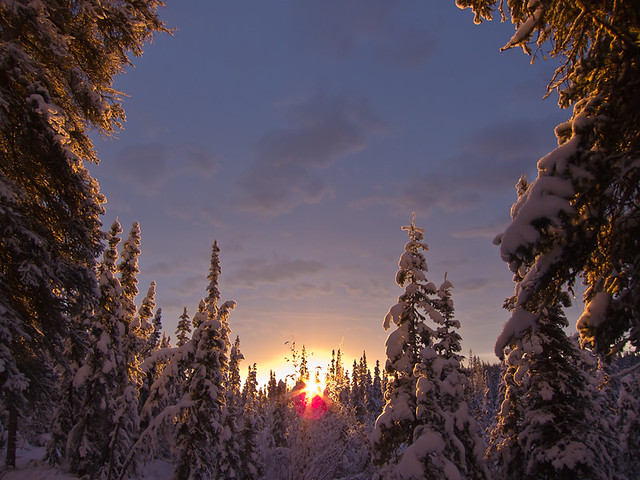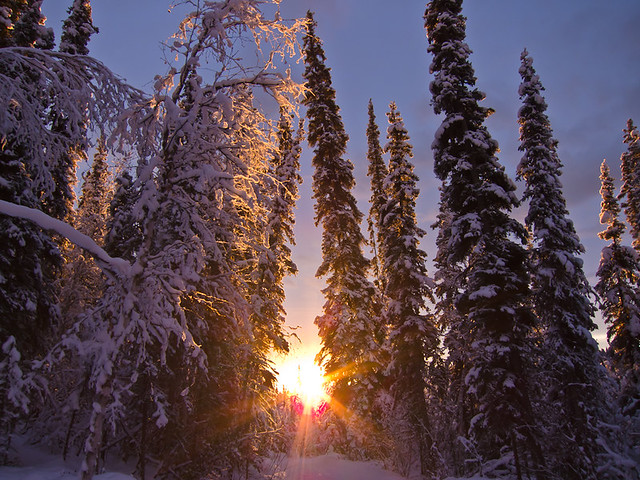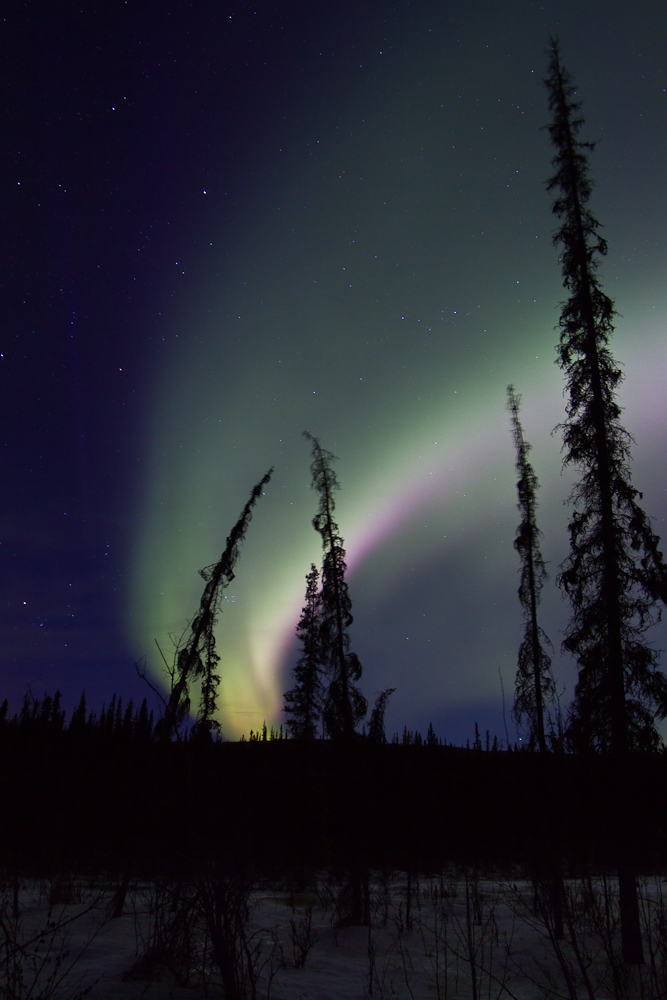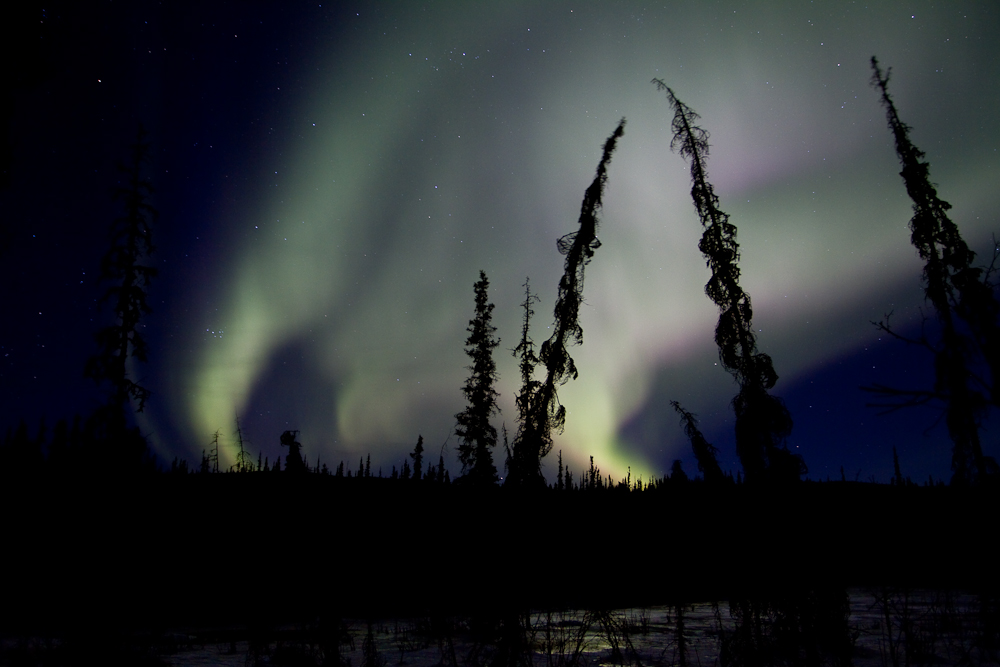Wednesday, October 5, 2011
Wild Imagination Journal Has Moved!
Sorry for the delay posting this, in case anyone is still stumbling into this here, but the blog has moved! Check out the new WI Journal right here: http://www.wildimagephoto.com/journal/
Saturday, April 2, 2011
White Mountains 100
So, I know I fell off the wagon again with posting... sorry. But to tide you over until I get back up on that horse again. Here is a video I put together about my recent experience racing in the White Mountains 100, winter endurance race. The course covers a long, 100-mile loop through the White Mountains Recreation Area north of Fairbanks. (www.whitemountains100.org). If you are interested in such crazy races, this is a great one.
Without further ado:
White Mountains 100 from David Shaw on Vimeo.
Without further ado:
White Mountains 100 from David Shaw on Vimeo.
Thursday, January 6, 2011
The Freedom of Point and Shoots
Ice fog at noon. ADMA mushing trails, Fairbanks AK.
Canon S95 Point and Shoot. RAW capture, post processing in Lightroom 3
Since my Ironman adventure back in November I've been rather obsessed with riding bicycles. This is something I've always enjoyed, but it has reached, I don't know, obsessive (?) proportions. I now own three main bikes, and have an older 4th bike that doesn't really get ridden. The most recent addition to my stable is a Salsa Mukluk. Now for those of you who don't live in Alaska, and aren't familiar with "Fat Bikes" this beast is something like a monster truck that you pedal. The tires are huge balloon things that are almost 4 inches wide, and can be ridden on extraordinarily soft pressures, which allows the rider to float along on top of snow where a normal set of tires would punch right through. Think of it as snowshoes for your bike.
What does this all have to do with photography? Well, not a great deal, aside from the fact that the new bike will be getting me out more over the remainder of the winter. Which means more images. Now I realize I'm not going to be carrying an SLR and a quiver of lenses, but I will be toting along my S95. Many a photographer will raise their eyebrows at such a silly little camera, but don't scoff. If I weren't carrying it, I wouldn't have a camera at all. And that would be bad.
I'm also finding that the point and shoot is reigniting some of my creativity. It is simple and lacks pretension. That relieves some of the internal pressure to find an image that others will deem a "good" photograph. With a point and shoot, I am free. Free to be creative, to screw around, to just shoot some of the goings-ons in my life. If I get some usable images out of it, great, if not, still great because I had a good time out doing it. Sharing is the purpose of photography. It is about sharing what we care about, what we do, what we see, and our vision of the world. And if I'm not carrying a camera because it is too big and delicate to lug around on my snowy biking adventures, then I'm not a very good photographer am I?
Plus it shoots video!
Sunday, January 2, 2011
New Year, New Light
Canon S95 Point and Shoot
This winter has not been easy for me. I'm used to some escape, and while I did spend nearly two weeks in Mexico in late November, I was so pre-occupied by preparing for, racing and recovering from the Ironman Triathlon, it hardly seemed to be an escape. In fact, this holiday season is the first I've ever spent in Alaska. Strange eh? I've lived here for 12 years and this was the first time I spent Christmas here. Basically, this means that I'm seeing this darkest time of year, in its entirety, for the first time.
Now that we are past the solstice we are gaining back the sun in the range of 3 minutes a day, and that is enough to feel. Each day feels a bit brighter than the one before, the light lingers on the southern horizon for hours after sunset. But when the sun is up, it sheds wonderful, low-angle light across the landscape. Yesterday, New Year's Day 2011, was one such day. It is days like yesterday, when the the world no longer seems so black and white, so gray on gray, but rather an explosion of color.
Canon S95 Point and Shoot
The 2 images here are mostly grab-shots, made with my new Canon S95 point and shoot. Got to say I'm impressed by this little machine. With a little work in Lightroom, the images are nearly perfect. I'm curious to see if my stock agency will accept a couple. I may try that this week.
Labels:
Canon S95,
landscape,
point and shoot,
winter
Thursday, December 30, 2010
Hiatus
Digital compilation of the 20 December 2010 lunar eclipse. Canon 7D, tripod, 70-200 f2.8L IS (IS turned off), 1.4tc, varying shutter speeds, ISO, and f-stop.
Yes, yes, I know, its been months and months since I posted. For some mix of reasons I've been lacking in photographic inspiration. I think I made fewer images over the course of this summer and fall than I have in many years. Not all the reasons are clear, but one in particular is crystalline. Since my return from Antarctica and the Southern Ocean last February, I have been training for an Ironman Triathlon (2.4 mile swim, 112 mile bike, and a full 26.2 mile marathon). I completed that Ironman in Cozumel, Mexico on 28 November. While the experience has nothing to do with photography (aside from the fact that I recorded video during parts of the race which I am currently editing), it was by far one of the most rewarding experiences of my life. Since it's off the subject, I won't go into the details here, though I may post a link at some point to the race report and video.
Now that I've put that behind me, at least for the time being, my cameras have started to whisper to me again. My computer keyboard is more enticing and sparks of creativity (not yet a fire) are starting to flicker around in my head.
Which leads me to this entry. I'm hoping to start posting here again with greater regularity, show off not just my new work but some older images that I'm rediscovering. All of this, to come in the not too distant future. Keep your eye's open.
The image here was made during last week's lunar eclipse. I was fairly unprepared that night, as I'd failed to remember that I no longer possessed a tripod foot for my 500mm. Thus I couldn't use my big glass for the shots. I'm still kicking myself over this, as I'd envisioned crisp, frame-filling shots. Instead I did the best I could with my 70-200 and 1.4TC. It works in the smaller sizes but isn't crisp enough for publication. Lesson learned, and I'm ordering a new tripod foot today.
Friday, April 9, 2010
5 Tips for Better Aurora and Night Photography
My recent posts of aurora images have drawn a record number of visits to this blog, and several people have queried me with questions in the comments, emails, facebook, or twitter. So I thought I would pass on a few tips to make your own efforts with night photography a bit easier.
1. Get a Tripod. I know this sounds self explanatory, but I'm constantly amazed at how many photographers don't own one, or if they do, don't use it. Tripods are, in my opinion, the one tool in a photographers kit that will greatly improve his or her images. Using a tripod forces you to slow down, think, compose carefully. You can't just point and shoot when using a tripod, you have to move slowly because everything simply takes more time. Of course, you also get sharper images. But I digress- You NEED a tripod for night work because the exposures are so long that it is absolutely impossible to do handheld work. So if you don't have one, get one. A cheapie from your local disount store will work, but I suggest you invest some money in a good set of legs and a good head, it will save you hours of frustration and buyer's remorse.
2. Determining Exposure. It is likely in night work that your camera will get very confused and unable to choose the appropriate f-stop or shutter speed. So you'll need to use the camera's manual setting. (For those who use auto-everything this is a good opportunity to throw away the crutches and learn something about exposure.) Next select an ISO that is appropriate to your camera. If you have a top of the line camera in Nikon or Canon's line with very low noise you'll be able to use a fairly high ISO setting, like 800 or even higher. If however, you shoot with a lower grade DSLR, you'll need to start lower. Try 200 or 400. Next, select a shutter speed. This will depend on your ISO and how fast your lens is. I suggest starting off around 15 seconds, then review your image on the LCD and adjust up or down as necessary. (A word of warning: on a dark night when the only light is your camera LCD your image will appear brighter than it will on your computer, so be careful.)
3. Sharpness. When I first began making images at night, this was my Achilles heel, as I think it is for most people starting out in this genre of photography. Focusing at night is tricky. Even the best cameras won't be able to focus in the dark so set your lens on manual focus and set it like this:
The left edge of the infinity line is the best place to start, small adjustments can then be made by reviewing the LCD after the first few images. You'll likely find if your foreground elements are placed sufficiently back in the frame that everything will be sharp, from the trees and hills to the stars and aurora.
4. Lens Choice. Go wide. Go fast. A good, wide-angle zoom allows you to show as much of the sky and foreground as you wish. The zoom will allow some latitude in your composition. A fast lens like an f2.8 or better will permit shorter shutter speeds which means less trailing in the stars, less wind-motion in the trees and better definition of the curves and pillars of the aurora. Slower lenses will work but higher ISOs (and thus more noise) might be necessary or longer exposures (leading to unwanted trailing in the stars or blurring of the aurora).
5. Composition. Compose as though you were composing a landscape image. Your subject is the sky, but the other elements in the frame are just as important as they would be in daylight. An image of just the aurora and a few stars might have some interesting color but lacks of sense of place or depth. A poorly composed foreground will be a distraction. Select a tree, mountain, person, tent, or whatever and compose carefully. Don't get caught up with just the sky, in the end the other elements of the image are just as important.
Anyone else have thoughts, tips or additional questions on night photography? If so, leave them in the comments.
Anyone else have thoughts, tips or additional questions on night photography? If so, leave them in the comments.
Thursday, April 8, 2010
Spring...kinda
(Disclaimer: This image has nothing whatsoever to do with the following post)
April in Fairbanks is a tease. We have sparkling blue skies for what seems likes weeks on end. The snows turn to water and slide into the creeks which flow over and through the winter's ice, eating it away. People walk around in shorts and shirt sleeves, willing summer to come, despite the 38 degree temperatures. Road bikes and motorcycles appear on the streets that are now clear of snow and ice. And then...then it snows.
It happens every year. And its happening today. Outside my window as I write this there are scattered flakes falling. Blowing actually, shoved along by an atypical cold wind. It is a sad landscape of gray and brown.
I know it won't last. Geese are arriving at Creamer's Field. I trust that they know better than I that spring is indeed here. Their lives depend on it, I'm just looking forward to summer.
Subscribe to:
Comments (Atom)







